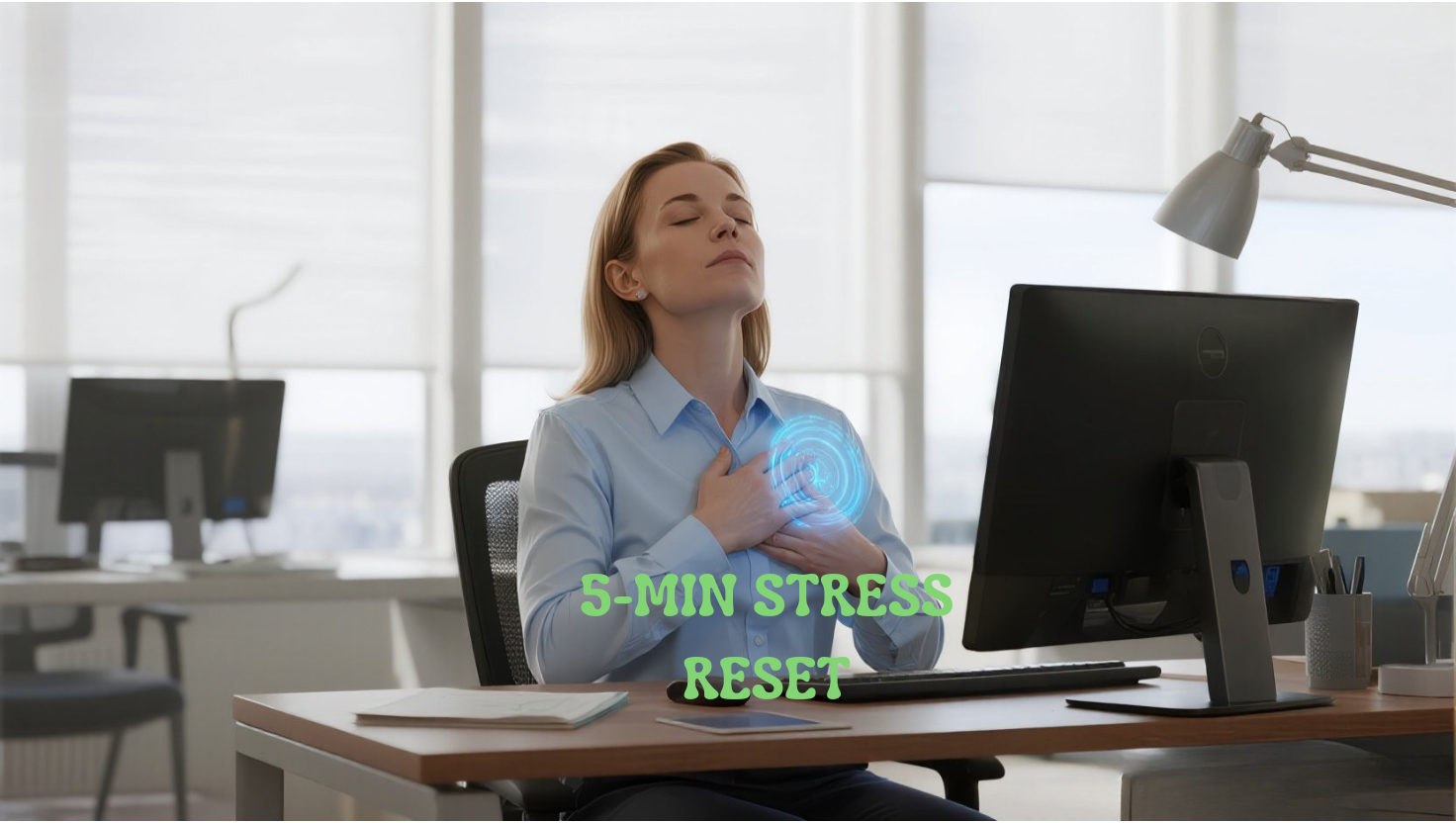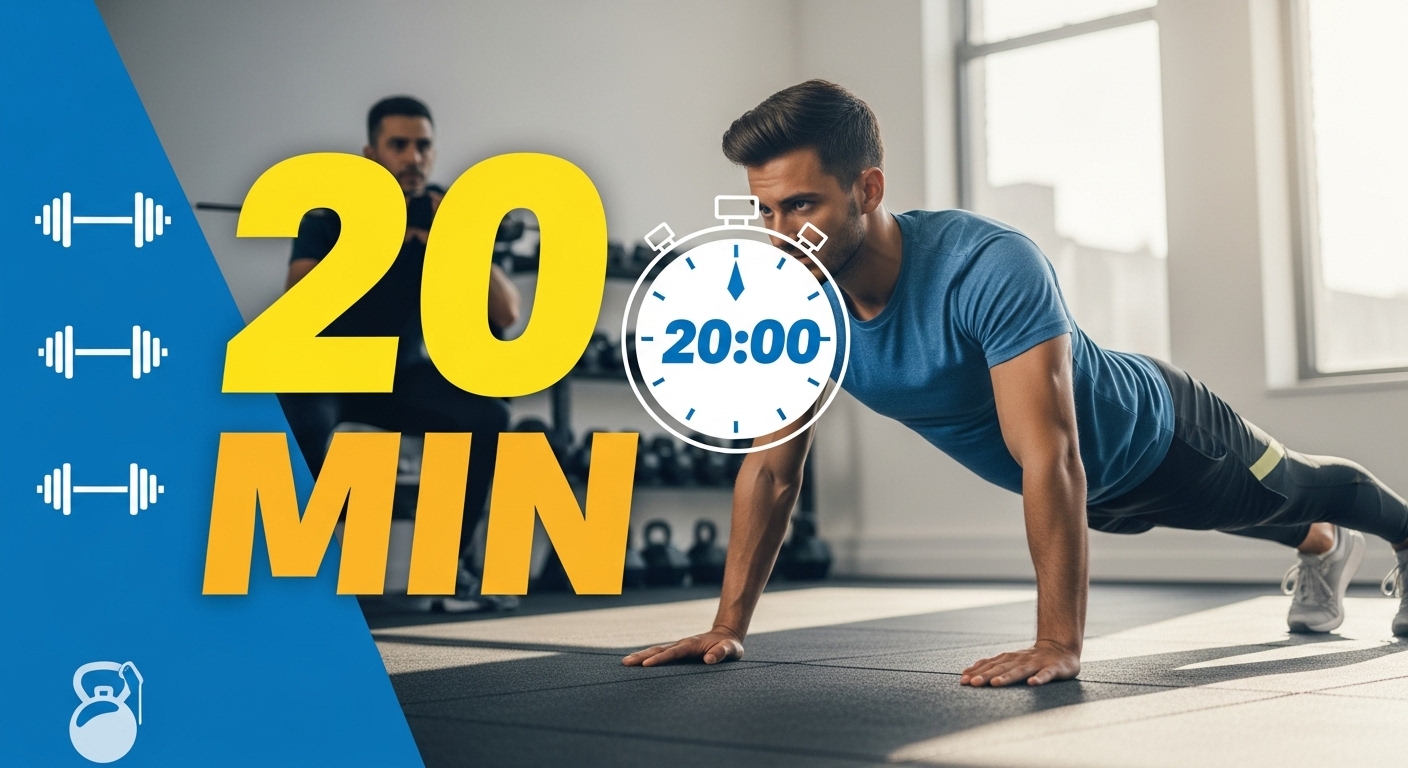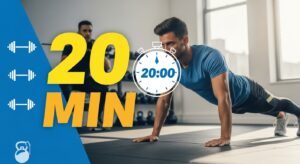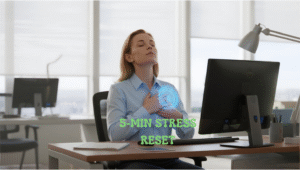Quick Stress Reset Techniques That Work in Under 5 Minutes
Between back-to-back meetings, endless emails, and the constant ping of notifications, finding time for wellness feels like another item on an already overwhelming to-do list. But what if I told you that the most effective stress relief doesn’t require a spa day, an hour-long yoga class, or even leaving your desk?
Enter micro-recovery: scientifically-backed techniques that take just minutes to reset your nervous system and restore mental clarity. Recent research shows that brief recovery interventions can be just as effective as longer wellness practices when used consistently throughout the day.
What Science Says About Micro-Recovery
According to the CDC, chronic stress impacts everyday life and can lead to worsening health problems, but taking small steps in daily life to manage stress can have a big impact. The beauty of micro-recovery lies in its accessibility – these aren’t time-intensive commitments that require perfect conditions.
Studies on digital stress management micro-interventions demonstrate that brief, targeted techniques can effectively activate the body’s relaxation response and help the sympathetic nervous system return to baseline. What’s particularly fascinating is that these short bursts of intentional recovery can be more sustainable than traditional wellness approaches that require significant time blocks.
The 2-Minute Reset: Four Evidence-Based Techniques You Can Do Anywhere
1. The 4-7-8 Breathing Pattern
This technique, rooted in pranayama yoga practices, works by activating your parasympathetic nervous system – essentially hitting the brakes on your stress response.
How to do it:
- Inhale through your nose for 4 counts
- Hold your breath for 7 counts
- Exhale completely through your mouth for 8 counts
- Repeat 3-4 cycles
Research indicates that controlled breathing techniques like this can reduce anxiety and enhance focus by activating the body’s relaxation response. I’ve used this before difficult conversations and noticed an immediate shift in my mental clarity.
2. Progressive Muscle Micro-Release
Instead of a full-body progressive muscle relaxation (which can take 20+ minutes), this micro-version targets the areas where we hold the most tension.
The 90-second version:
- Tense your shoulders up to your ears for 5 seconds, then release
- Clench your jaw, then let it drop open naturally
- Make fists with your hands for 5 seconds, then shake them out
- Take three deep breaths, noticing the contrast between tension and release
3. The 5-4-3-2-1 Grounding Technique
This mindfulness-based approach pulls you out of stress spirals by anchoring you in the present moment through your senses.
Quick implementation:
- 5 things you can see (the texture of your desk, light coming through a window)
- 4 things you can touch (your chair, your clothing, a pen)
- 3 things you can hear (traffic, conversations, your own breathing)
- 2 things you can smell (coffee, hand sanitizer)
- 1 thing you can taste (gum, lingering coffee, or just the taste in your mouth)
4. Digital Micro-Breaks with Purpose
Taking short breaks from screens can reduce eye strain and mental fatigue, and spending even 10-15 minutes outdoors has been shown to lower cortisol levels and improve mood.
The screen-away strategy:
- Step away from your computer for 2 minutes every hour
- Look out a window if possible, or at something 20+ feet away
- Do gentle neck rolls or shoulder shrugs
- If outdoors access is available, step outside and take 5 deep breaths of fresh air
Building Your Micro-Recovery Toolkit: A Practical Daily Schedule
The key to making micro-recovery work isn’t perfection – it’s consistency. Mental health experts emphasize that combining different stress-reducing tools and finding what works for your specific situation is essential for long-term success.
Morning Kickstart (2 minutes): Before checking your phone, do one round of 4-7-8 breathing while your coffee brews.
Mid-Morning Reset (90 seconds): After your first big task or meeting, try the progressive muscle micro-release.
Lunch Break Grounding (3 minutes): Use the 5-4-3-2-1 technique while eating – it doubles as mindful eating practice.
Afternoon Energy Shift (2 minutes): When you hit that 3 PM wall, step away from screens and do gentle stretches or look outside.
End-of-Workday Transition (3 minutes): Before leaving work (or closing your laptop), do a brief progressive muscle release to signal the transition between work and personal time.
Why Micro-Recovery Works When Traditional Wellness Fails
Research on work recovery demonstrates that brief, frequent recovery moments throughout the day can be more effective than longer, less frequent wellness activities. The reason is simple: stress accumulates incrementally throughout the day, so addressing it incrementally makes biological sense.
Traditional wellness advice often sets us up for an all-or-nothing mindset. Miss your morning meditation? Your day is shot. Can’t make it to yoga class? Stress wins. Micro-recovery removes these barriers by meeting you where you are, when you need it most.
The Compound Effect of Small Actions
A 2025 research survey found that 63% of Gen Z rated their mental health as “less than good,” with stress, poor sleep, and emotional pressure as major contributing factors. But here’s what’s encouraging: when people consistently implement brief stress-reduction techniques, they report feeling more in control and better equipped to handle unexpected challenges.
Think of micro-recovery like compound interest for your nervous system. Each small reset builds resilience that compounds over time. You’re not just managing the stress of the moment – you’re training your body to bounce back faster from future stressors.
Making It Stick: Implementation Tips from Real Experience
Start with one technique. Don’t try to master all four at once. Pick the one that feels most natural and practice it for a week before adding another.
Link it to existing habits. Attach your micro-recovery practice to something you already do regularly – checking email, drinking coffee, or transitioning between meetings.
Give yourself permission to modify. Can’t do the full 4-7-8 breathing? Try 3-5-6. Don’t have access to outdoors? Looking out a window counts. The goal is progress, not perfection.
Notice without judging. Some days these techniques will feel more effective than others. That’s normal. The act of pausing and trying is valuable in itself.
Your Next 5 Minutes
Right now, as you finish reading this article, try one micro-recovery technique. Choose whichever one appeals to you most and give it a genuine try. Notice how you feel before and after – not with the pressure to feel dramatically different, but with curiosity about what shifts, even subtly.
The beauty of micro-recovery is that it’s always available to you. No special equipment, no perfect timing, no ideal conditions required. Just you, a few minutes, and the decision to prioritize your well-being in small, sustainable ways.
In a world that glorifies being constantly busy, these tiny acts of self-care become quiet rebellions – moments where you choose your long-term resilience over immediate productivity. And ironically, that choice often makes you more productive, focused, and creative in the long run.
The science is clear: small, consistent actions compound into significant changes. Your nervous system will thank you, your stress levels will stabilize, and you’ll have practical tools that travel with you wherever life takes you.














Post Comment